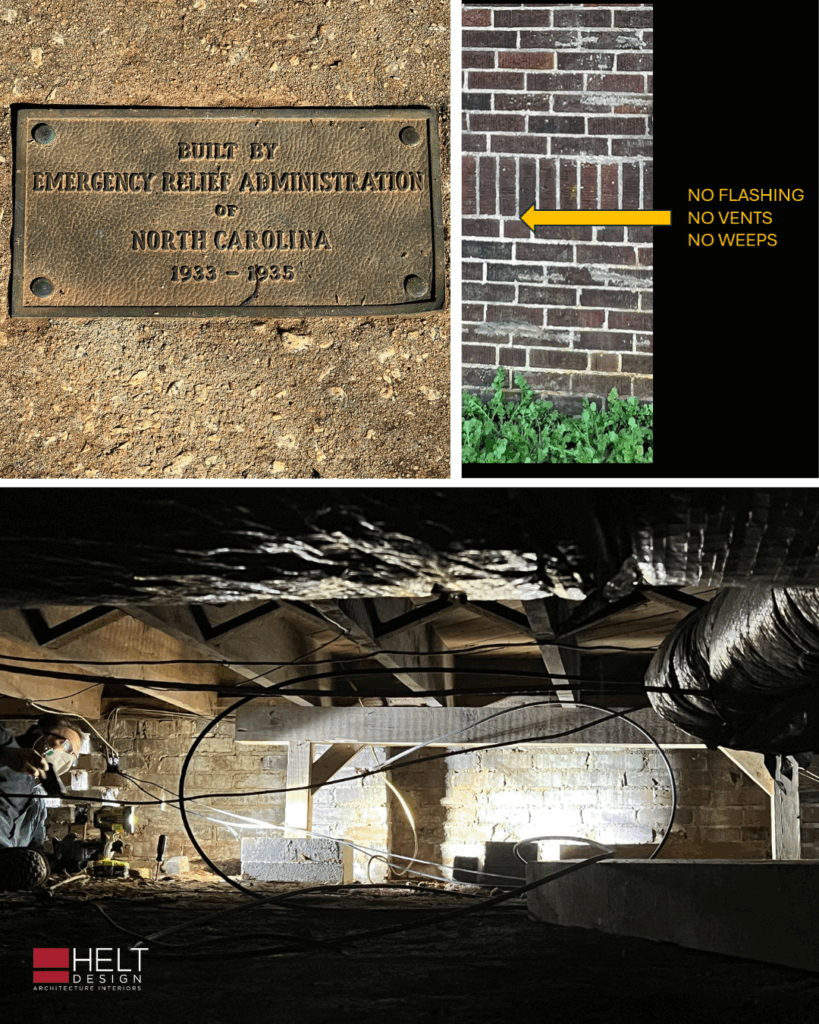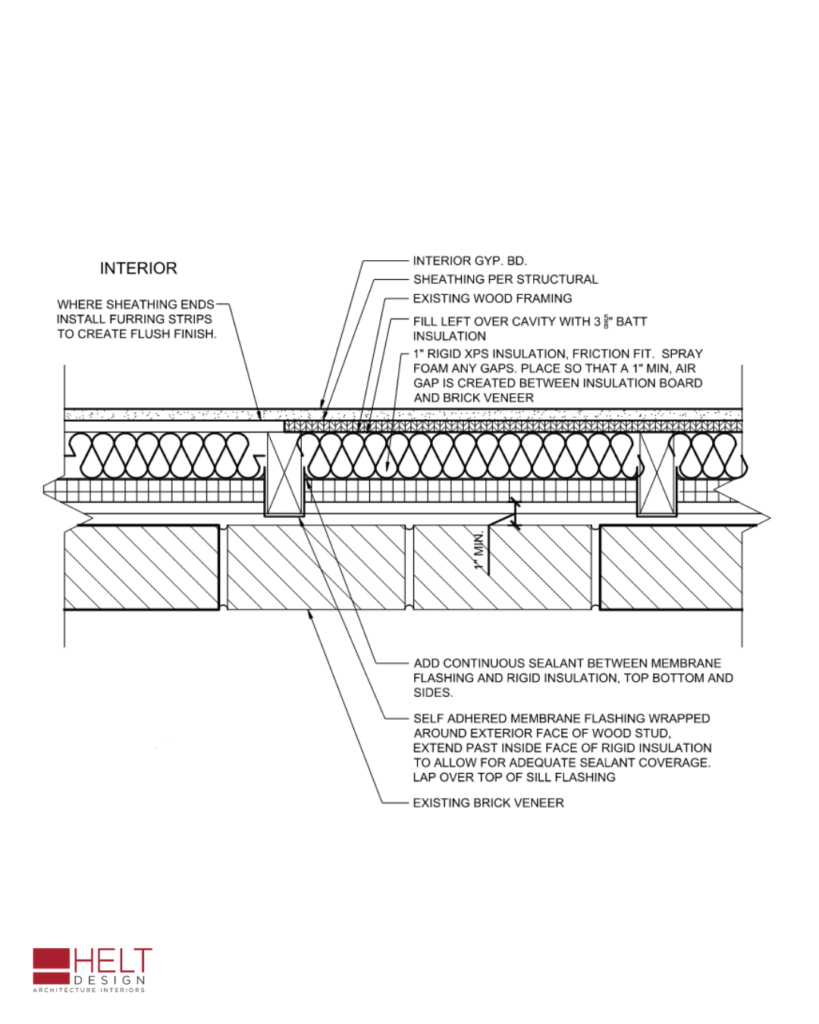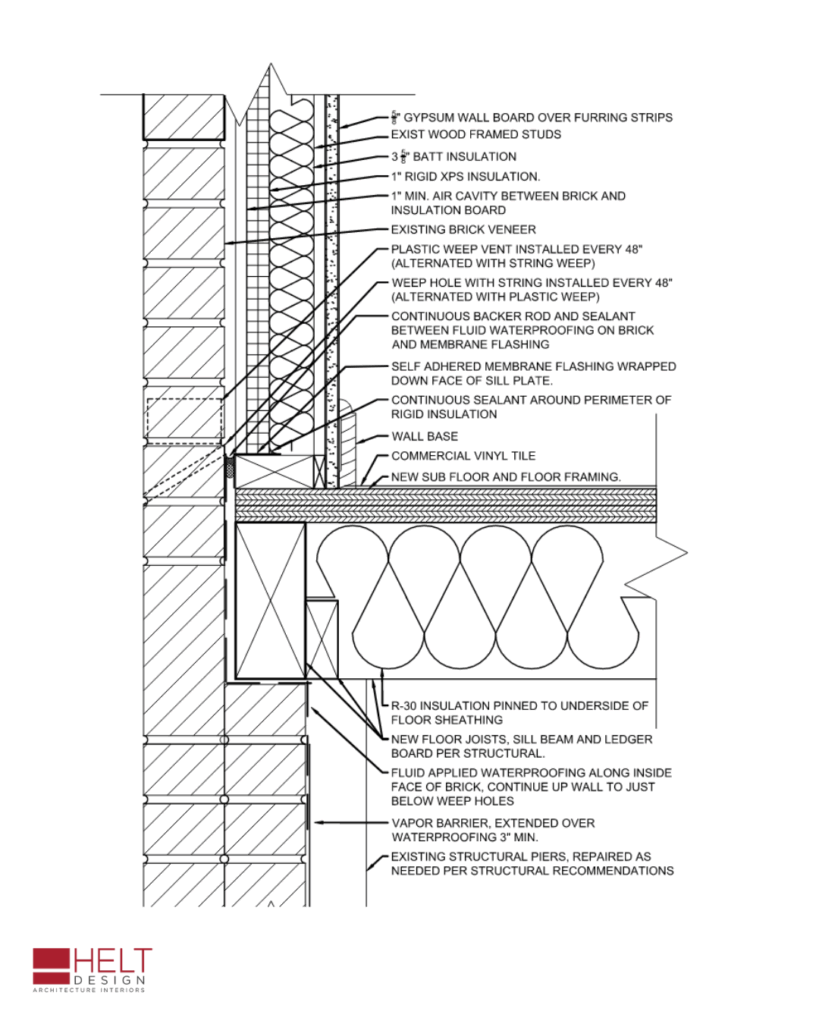
We were recently asked to evaluate an existing Depression-era building. At a glance, it appeared sound — but as we began peeling back the layers, we unfortunately uncovered a much more vulnerable core.
Walking the site, we noticed the absence of thru-wall flashing. Not an issue for a true 3-wythe load-bearing masonry wall — but in this case, the building is wood frame with brick veneer, and that changes everything.
There’s no flashing, no exterior sheathing, no insulation, and no vapor barrier or drainage plane. The only structural sheathing is 1×6 tongue-and-groove paneling on the interior face of the stud wall, which means the studs and sheathing are fully exposed to the masonry cavity — leaving them highly susceptible to moisture intrusion and rot. In this case, we’ve already found a rotted sill beam, and ongoing exploratory openings suggest more hidden damage.
Without a drainage plane or thru-wall flashing, any water that migrates through the brick has nowhere to go — leading to long-term deterioration behind an otherwise healthy-looking façade.
What can be done?
There’s no one-size-fits-all fix, but potential interventions may include:
- Wrapping exposed studs with peel-and-stick bituminous flashing tape
- Installing XPS rigid insulation in the cavity to add insulation value and establish a drainage plane
- Protecting sill plates (if salvageable) with bitumen tape or a liquid-applied membrane
- Replacing damaged sill plates and wrapping new members with moisture protection
- Adding weep holes and mortar wicking rope at the base of the wall, above windows, and at the top to promote drainage and airflow
- Selective installation of thru-wall flashing from the exterior — technically feasible, but a labor-intensive and expensive process
This was common in Depression-era buildings. Opportunities to cut costs at the time were important, and building science and moisture management were understood very differently.
We’re hopeful not to find more rot — and with targeted improvements, this building can be adapted for a new use.
Targeted improvements are critical — not just for preserving the structure, but for ensuring long-term performance and protecting future investments.


